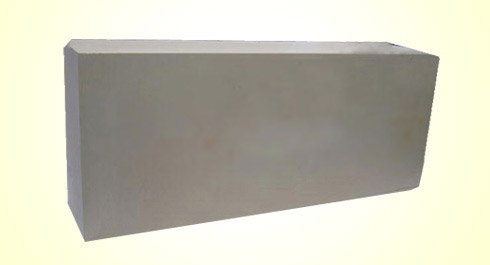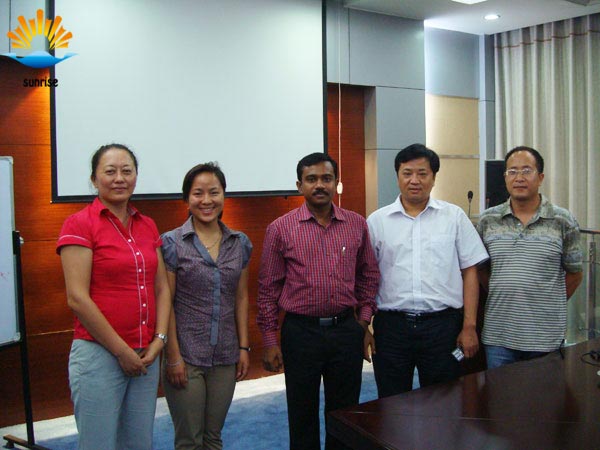
Product List
Success Case
Contact Us
- 0086 371 63838939
- 0086 371 63835539
- sales@sunriserefr.com
- tkfanyi
- No.36 Fengchan Road, Zhengzhou City

News
Common Refractories Used In the Glass Furnaces
- More related products
- Fused Cast AZS
- Fused Cast Alumina Block
- Fused Cast High Zirconia Block
- Fused Cast Skid Rail Block
With the development of new refractories, the quality of the refractories has been continuously improved, which promotes the high temperature melting technology in the glass industry.

Refractory materials used in the glass furnace should withstand the physical erosion by high temperature, flame, alkali fly ash and glass liquid. Therefore, besides the general requirement s of refractories, the refractories used in the glass furnaces should also meet the special requirements of the melting process of glass. For example, it should have enough high temperature strength and good high temperature volume stability as well as resistance to glass liquid, alkali fly ash and flame and high refractoriness.
Refractories, according to its refractoriness, can be divided into ordinary refractories, common refractories (1580-1770℃), high refractories (1770-2000℃) and special high refractories (>2000℃). Refractories used in the glass furnaces include the following types:
1) The SiO2 series refractories
a. White afrodite
The white afrodite is a kind of natural quartz refractory bonded with kaolinite. The white afrodite with gray color, dense and hard structure and no impurities and stripes is better. Its main crystal phases are quartz and kaolinite with obvious layered structure and anisotropy. Its refractoriness is between 1650-1730℃.
The expansion of the white afrodite is different from that of the silica brick. It has the biggest expansion coefficient at 700-800℃ and is most likely to burst.
The white afrodite, after burned, has an increased softening temperature under load and strength, low residual expansion and stable volume and an improved thermal shock. So, it is used as a refractory in the middle and small size furnaces.
b.Silica brick
The silica brick is a refractory with a SiO2 as the main composition. It is made of high pure and dense quartz and a small amount of lime. The clinker is waste silica brick powder. Its composition is 94%-98% SiO2, 1.5%-3.5% CaO, 0.2%-2% Al2O3, 0.3%-3% Fe2O3 and 0-0.5% R2O.
Its main mineral phases are tridymite and cristobalite as well as a small amount of residual quartz and glass phase. The transformation of crystal phases in the silica bricks is accompanied with volume changes. The biggest thermal expansion occurs below 300℃, so when preheating the furnaces it should be paid attention to. When the temperature is above 700℃, it will not damage the furnace.
The thermal stability of the silica brick is bad. The 850℃ silica brick can only withstand once or twice rapid cooling in the water with being damaged. Silica brick is an acid refractory, so it has good resistance to the acid slags, but bad resistance to alkali slags and erosion by glass liquid.
Since silica brick has high softening temperature under load and bad resistance to R2O in the glass liquid, it is used in crowns, head walls and breast walls of the cooling zone, but is not suitable to the sidewall in direct contact with glass liquid.
2) Al2O3-SiO2 alumina silicate refractory
a. Fire clay brick
Fire clay brick is made of refractory clay as the main raw material with 30-46% Al2O3. Their main mineral phases are mullite and SiO2 crystals (mainly cristobalite) as well as a certain amount of glass phase. Its refractoriness can be as high as 1580-1750℃, but its softening temperature under load is only 1300-1450℃. Therefore, the allowable service temperature is reduced accordingly, typically under 1300℃. It is mainly used in low temperature parts, such as the bottom brick, the lower sidewall brick of the melting zone and the cooling zone, the beam brick, the lower wall of the regenerator, the rider arch and the lower parts of the checker bricks and the flue crown.
b. High alumina brick
It is made of bauxite as the raw material by firing under 1500℃. With the increasing of the Al2O3, it can also be divided into silimanite products, mullite products, mullite-corundum products, corundum-mullite products and corundum products. With the changing of the content of the Al2O3, the main crystal phases can be different. When the content of Al2O3 is low, the main crystal phase is mullite. When the content of Al2O3 is high, the main crystal phase is corundum.
The refractoriness, softening temperature under load and corrosion resistance to glass liquid of high alumina brick is higher than that of the fire clay brick. Therefore, it is mainly used in the high temperature load-bearing parts.
3) AI203-Si02-ZrO2 fused cast refractories
The AI203-Si02-ZrO2 fused cast refractory is also called fused cast AZS. It is made by melting the raw materials in an electric arc furnace, then casting the melt into a mold and the n cooling it into solid. It features with dense structure, high porosity, high bulk density, high softening temperature under load and good corrosion resistance.
The earliest fused cast refractory is fused cast mullite brick, also called black iron brick. The fused cast AZS block, also called white iron brick, is mainly composed of baddeleyite (ZrO2) and coexisting corundum as well as a small amount of glass phase. It has stable and dense structure and excellent corrosion resistance to glass liquid. It is the best material to resist the corrosion of molten glass.
- Read more
- The Application Of Fused Cast AZS Block In The Sidewall Of Glass Furnaces
- Refractory Selection for Oxy-Fuel Glass Furnaces
- Structure And Refractory Selection Of C-Glass Marble Furnaces
- Features And Applications Of Refractory in Pot Furnaces
- How to Expand Service Life of Float Glass Furnaces
Leave Message
For more information on any of our products please get in touch using the form below. One of our sales team will respond to your enquiry as soon as possible.

Copyright © 2014 Zhengzhou Sunrise Refractory Co., Ltd. 豫ICP备13002126号












